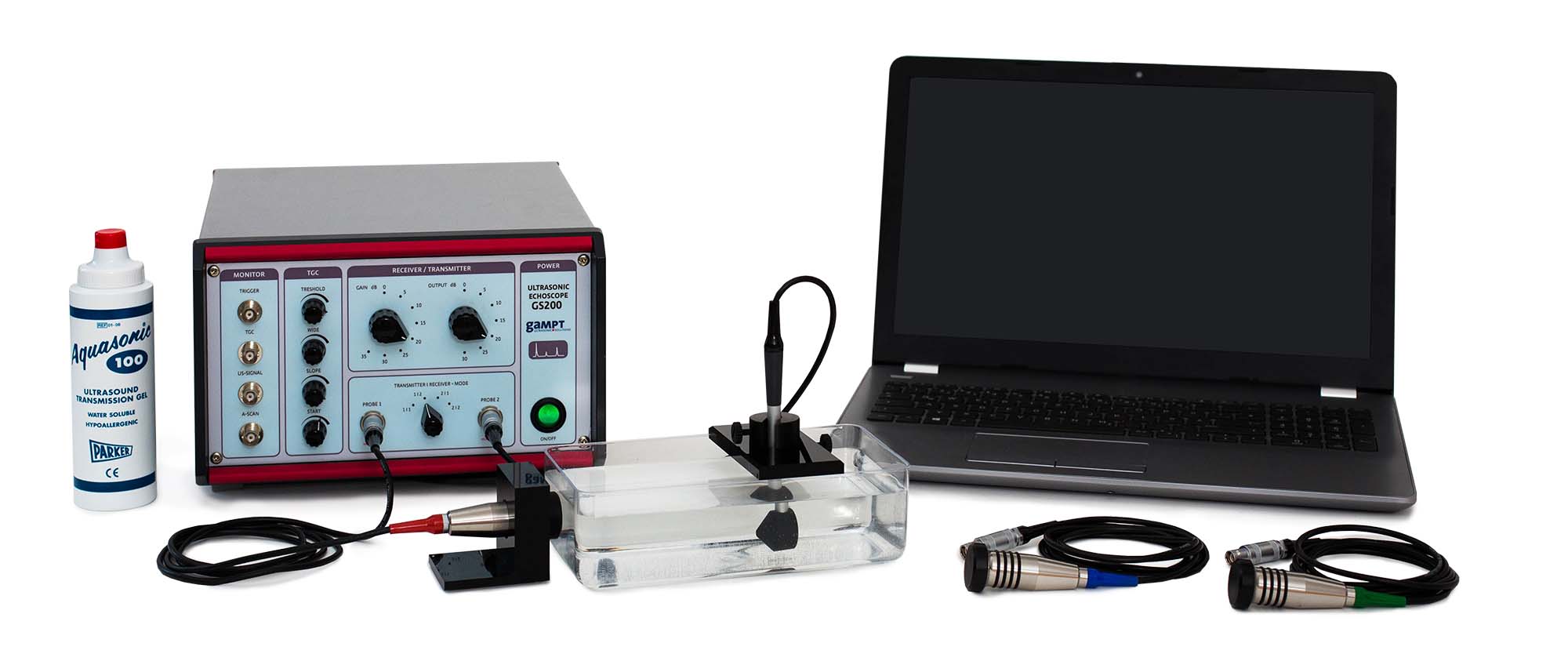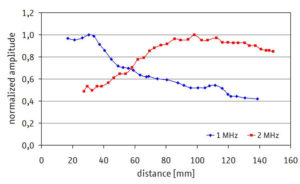Article No. VK-PHY20
PHY20 Determination of focus zone
Characterization of the sound fields of two ultrasonic probes of different frequencies by scanning reflection and transmission with a hydrophone (near field length, focus zone, axial resolution power)
- Subject matter of the experiment
- Theoretical and practical aspects of the experiment
- Results
- Equipment
- Related Experiments
In the experiment, two ultrasonic probes of different frequency are characterised by a scanning of their sound fields with a hydrophone with regard to their near field length, focus zone and axial resolution power.
Keywords: Velocity of sound, wavelength, interference, Huygens’ principle, near field, far field, near field length, focus zone, axial resolution power, hydrophone
Ultrasonic probes show a different axial and lateral resolution power in dependence on their frequency. Whereas the axial resolution power is limited by the frequency of the ultrasonic probes, the lateral resolution and location of the focus zone are caused by the geometry of the sound fields. Due to interferences according to the Huygens’ principle, there occurs a sound field at a round ultrasonic probe that can be divided into two areas: the near field, which shows complex conditions with strong amplitude modulations, and the far field, which appears as a sound beam with decreasing amplitude. The near field length is defined as the last maximum of the sound pressure amplitude on the acoustic axis. In the experiment, the sound pressure amplitudes for two ultrasonic probes (1 MHz and 2 MHz) are measured with a hydrophone along the sound propagation axis. From the measurement curves, the focus zones of the probes are determined and compared with the values for the near field length which can theoretically be calculated from the radii of the transducer ceramics and the wavelengths of the ultrasonic frequencies.
The calculated near field lengths with a measured sound velocity in water of 1477.64 m/s (18.5 °C) are 43.3 mm (1 MHz) and 86.6 mm (2 MHz). The values – obtained from the measurement curves – for the maxima of the signal amplitudes are approx. 30 mm (1 MHz) and 100 mm (2 MHz). More exact results are not to be expected, due to the relatively simple experiment structure. The measurements show, however, that the focus zone of the 2 MHz probe is considerably further away from the probe. The measurements are thus perfectly sufficient for the estimation of the focus area of a probe.
| Ord.no. | Description |
|---|---|
| 10400 | Ultrasonic echoscope GS200 |
| 10151 | Ultrasonic probe 1 MHz |
| 10152 | Ultrasonic probe 2 MHz |
| 10451 | Hydrophone set |
| 70200 | Ultrasonic gel |

